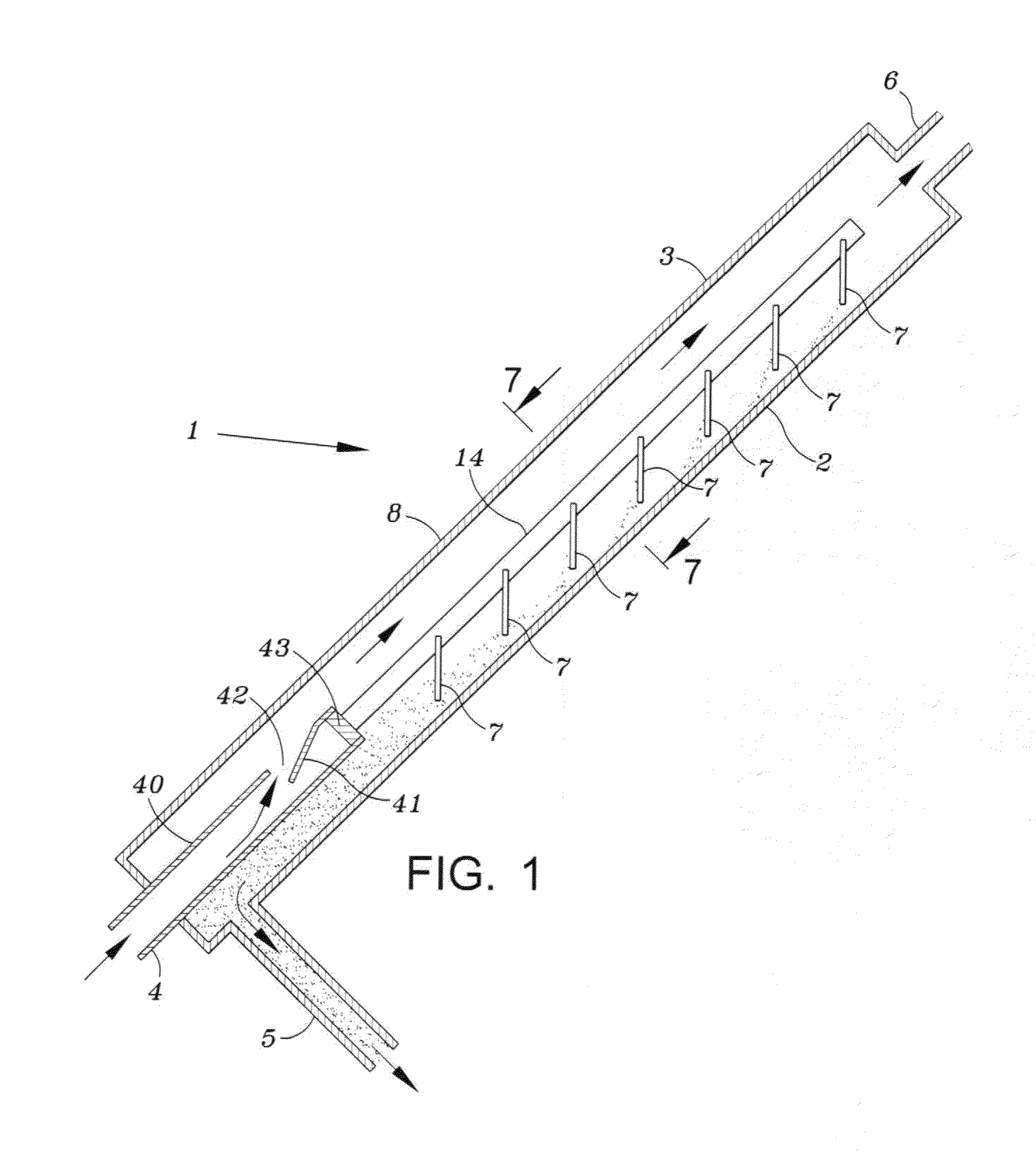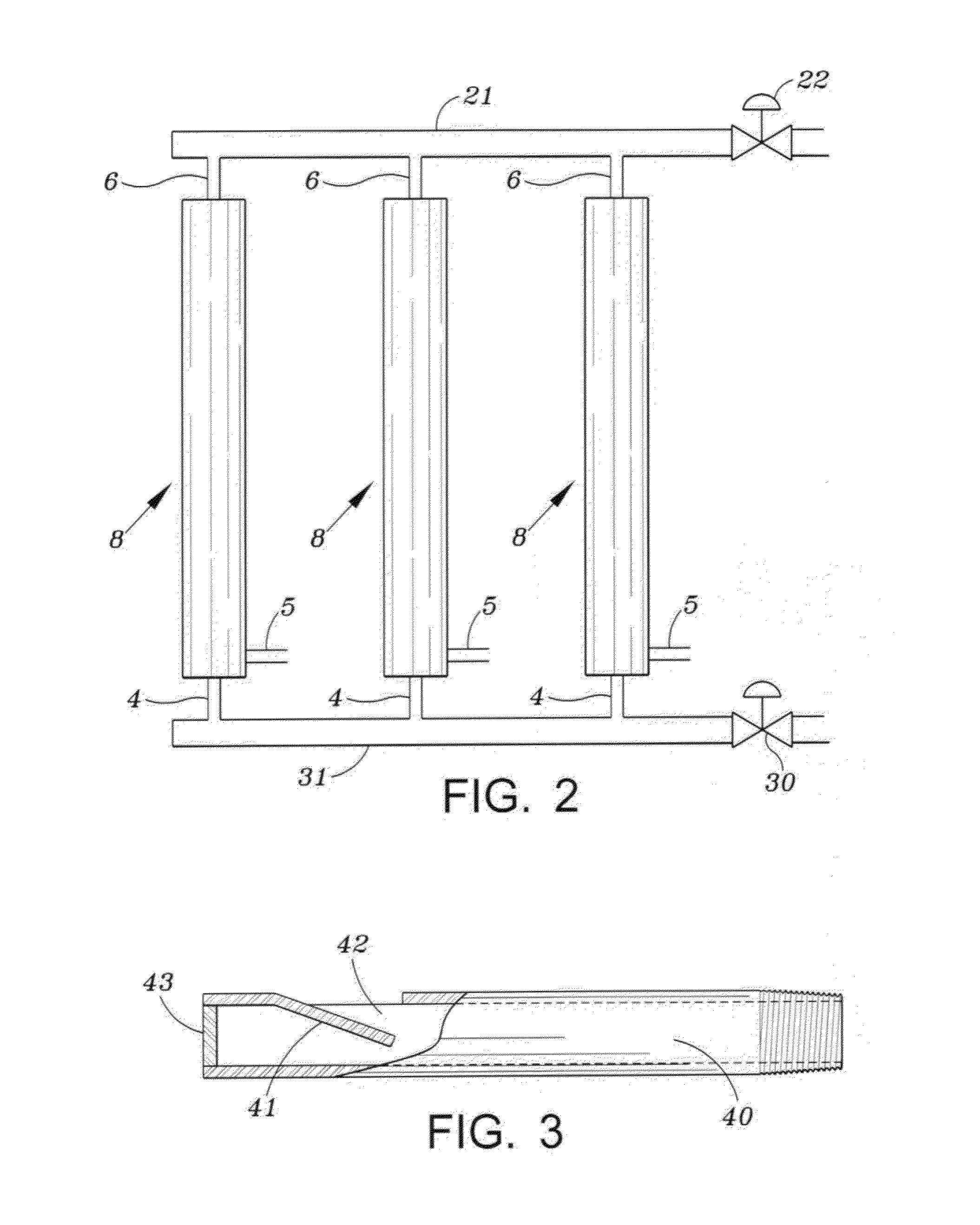Material separator
a separator and material technology, applied in the direction of liquid degasification, separation process, liquid displacement, etc., can solve the problems of equipment beyond repair, costly and extensive cleaning operations of piping and equipment, equipment damage or plugged up, etc., to slow the fluid velocity and quick and efficient removal
- Summary
- Abstract
- Description
- Claims
- Application Information
AI Technical Summary
Benefits of technology
Problems solved by technology
Method used
Image
Examples
Embodiment Construction
[0018]FIG. 1 illustrates an embodiment of the invention and shows a view of a separator 1. A plurality of separators may be connected to common manifolds for the input fluid, particle removal, and for the output fluid. The separator includes a first elongated body portion 8 having an upper side wall 3 and a lower side wall 2. In use the separator is inclined with respect to the horizontal at an angle of about, but not limited to, twenty to seventy degrees.
[0019]The separator body 8 may be a cylindrical tube having an inlet 4 at the lower portion, an outlet 5 in the lower portion for removal of the separated material, for example sand, and an outlet 6 in an upper portion for the liquid and any gas that may be present in the fluid introduced at the bottom of the body.
[0020]A cylindrical pipe 40 is connected to the inlet 4 and is secured within the body 8. As shown in FIGS. 3 and 5, the wall of the pipe has an outlet 42 formed by cutting a U-shaped slot in the wall and then bending the...
PUM
| Property | Measurement | Unit |
|---|---|---|
| angle | aaaaa | aaaaa |
| angle | aaaaa | aaaaa |
| velocity | aaaaa | aaaaa |
Abstract
Description
Claims
Application Information
 Login to View More
Login to View More - R&D
- Intellectual Property
- Life Sciences
- Materials
- Tech Scout
- Unparalleled Data Quality
- Higher Quality Content
- 60% Fewer Hallucinations
Browse by: Latest US Patents, China's latest patents, Technical Efficacy Thesaurus, Application Domain, Technology Topic, Popular Technical Reports.
© 2025 PatSnap. All rights reserved.Legal|Privacy policy|Modern Slavery Act Transparency Statement|Sitemap|About US| Contact US: help@patsnap.com



